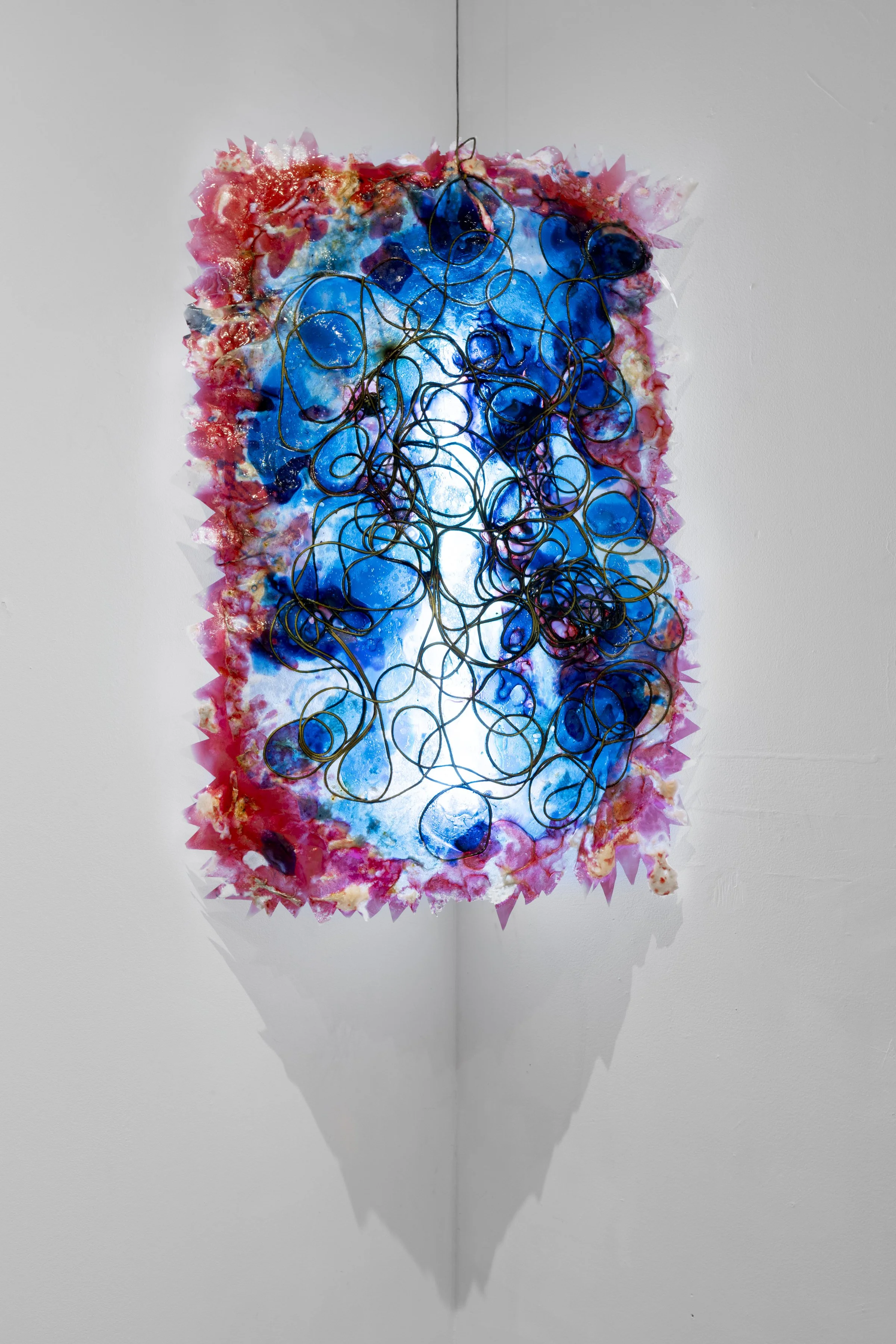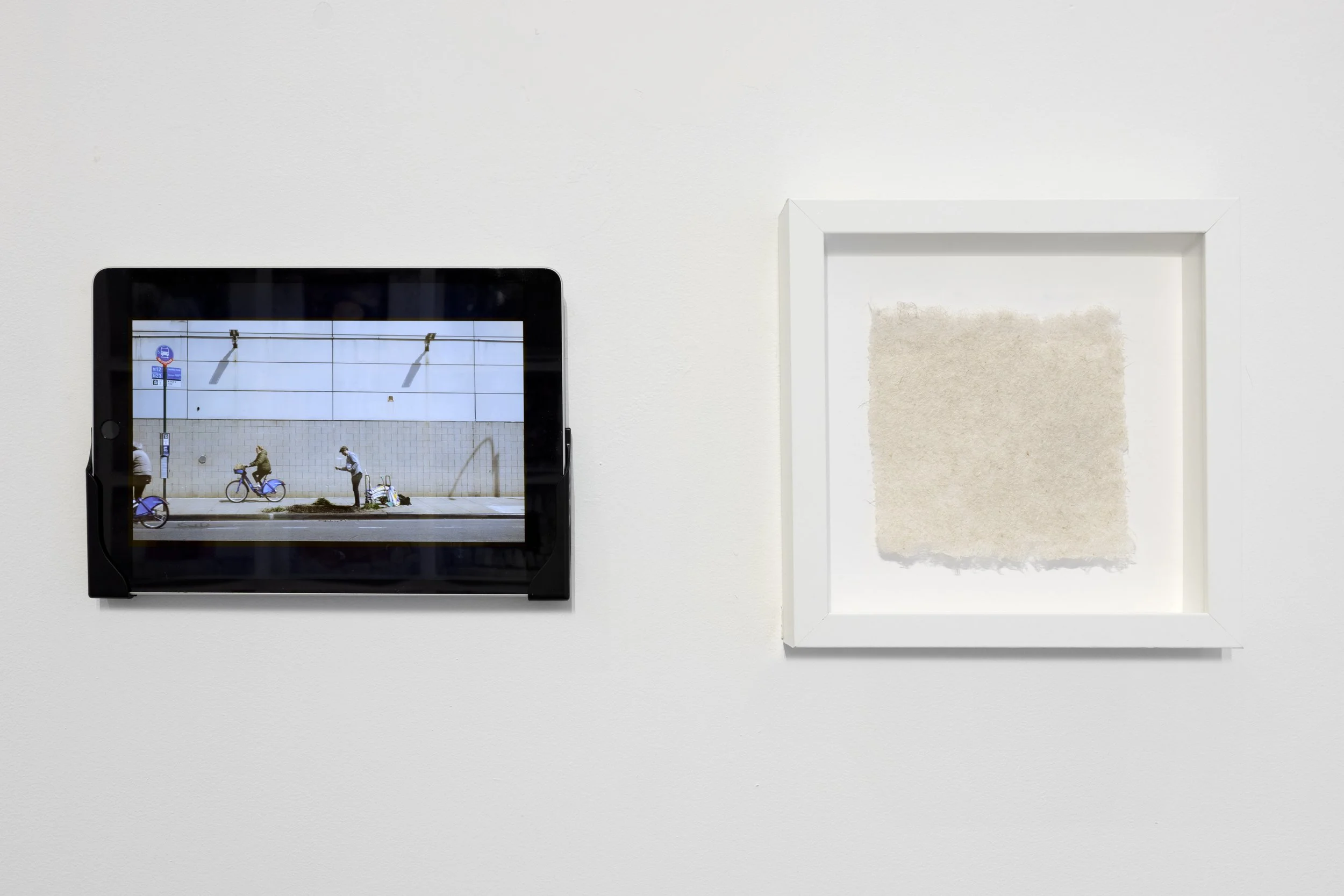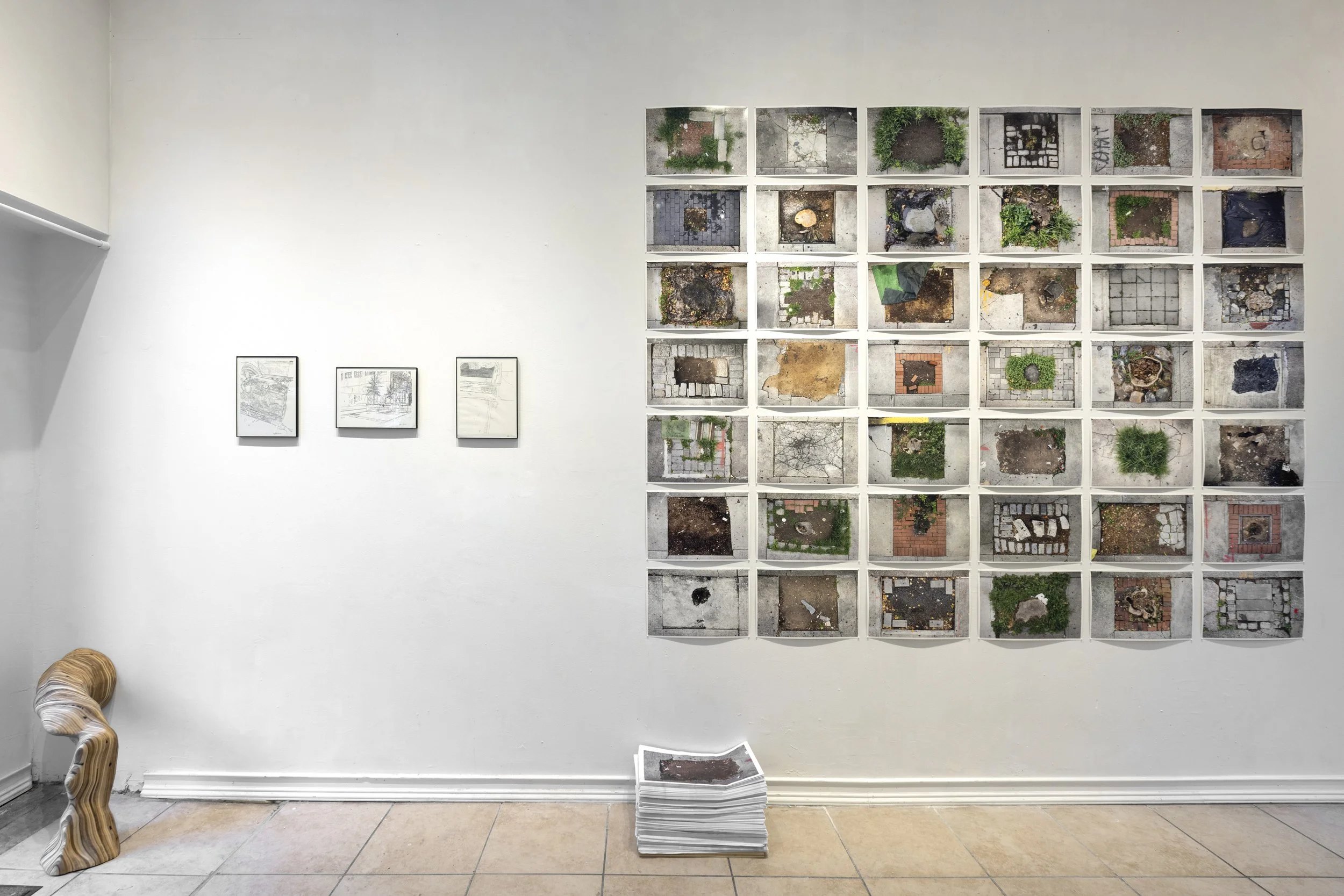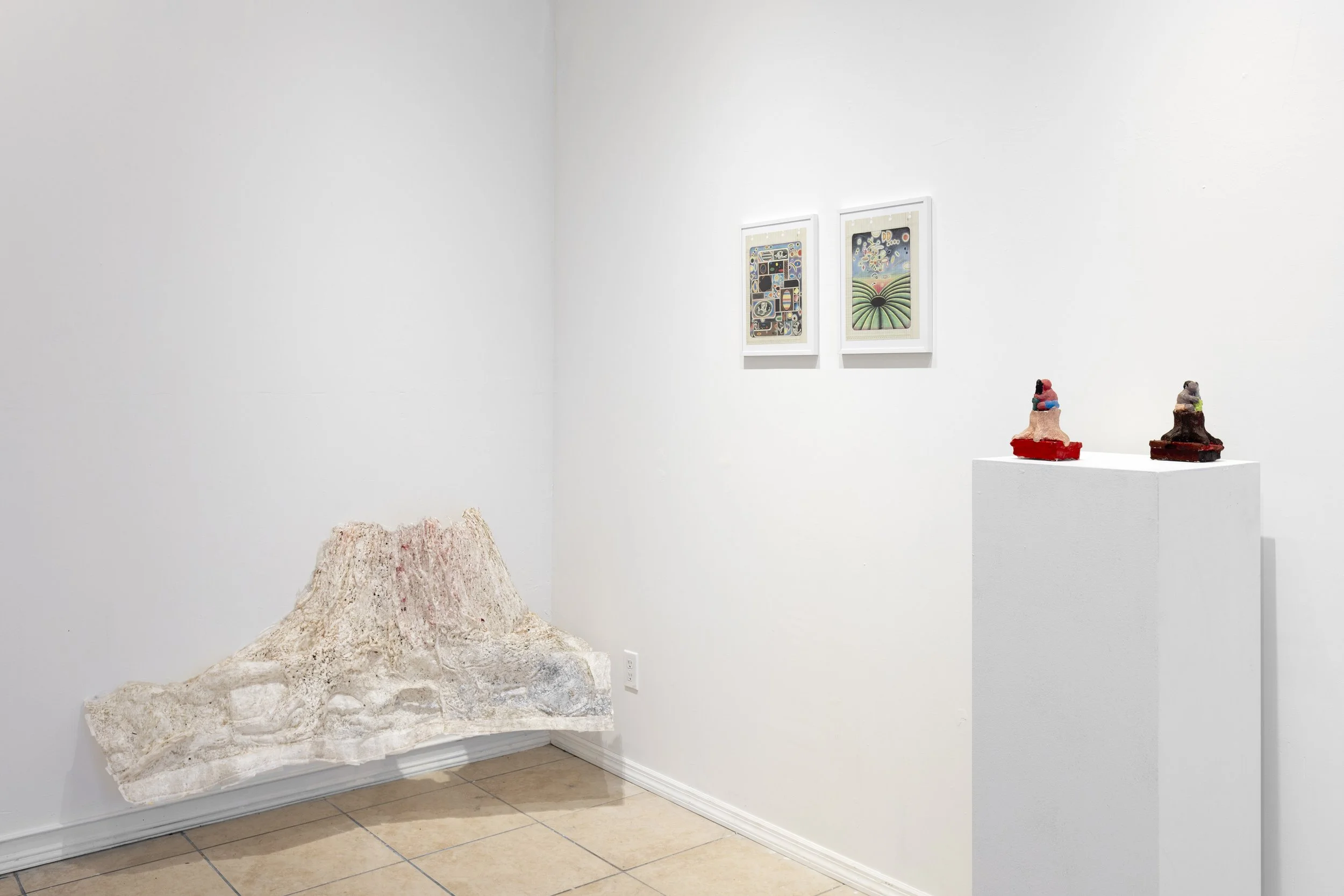‘Fallow Frames’
Liz Atz, Alexandra Borovski, Lee Cannarozzo, Matt Freedman, Alexa Hoyer, Ethan Shoshan, Jude Tallichet, Alexander Zev
Curated By Alexa Hoyer
Dec 3, 2023 - Jan 7, 2024
A tree pit, often known as a tree bed, is a small plot of land carved out from the solid pavement of the sidewalk—a common sight across numerous neighborhoods in New York City. While many nurture trees, plant life, and vegetation, a significant number are neglected or abandoned — overlooked corners in a city that typically puts great value on space. Ubiquitous yet enigmatic, they appear like gaps or voids in the city's concrete landscape with questions about their nature and purpose. Over the past year, Alexa Hoyer has been mapping and documenting these spaces in various states of dereliction, capturing a unique perspective on New York City's distinctive topography. The exposed earth, sometimes weathered and possibly strewn with debris, becomes a canvas for contemplation, unveiling new layers of meaning within the material of our everyday environments. The project inspired her to curate "Fallow Frames," a group exhibition delving into the pervasive yet mysterious forms of these tree pits, exploring their significance in terms of form, culture, and architecture.
Liz Atz’s recent work, “Pinking” mirrors the rectangular form of an abandoned tree bed with an organic sinew of silk cord constrained in an undulating plastic surface. The work is part of an ongoing project investigating the use of Chitosan, a sustainably sourced polymer, as a replacement for petroleum based plastics in art and design applications.
Alexandra Borovski’s drawings transform the traditionally perceived emptiness of a void into a space of limitless potential. The use of ledger paper, typically associated with order and categorization, is disrupted by images of meticulously rendered landscapes in flux, space rocks, and cosmic phenomena.
Lee Cannarozzo’s “Flax Estates” comprises seven temporary earthworks situated in New York City's Chelsea neighborhood, utilizing abandoned sidewalk plots that were cultivated, enriched, and sown with flax (Linum usitatissimum). The harvest was repurposed into a unified paper-based non-site, encapsulating san experimental venture focused on creating locally sourced art materials and revitalizing overlooked public micro spaces into fleeting expressions of Land Art.
In “Chainsaw Babies”, Matt Freedman mirrors marginalia in illuminated manuscripts, offering a space where artists blend absurdity and irreverence with poignancy. Innocent babies, seated on tree stumps in tree wells, mimic right-wing politicians with assault rifles, prompting contemplation on whether these seemingly threatening infants symbolize a campaign against urban trees or a denial of climate change, transforming the city into a cartoon battleground.
Three drawings depicting tree beds were selected from Ethan Shoshan's “Signs” series, a 15-year exploration of public and private spaces undergoing gentrification. Within this collection, the artist meticulously examines signs, contextual contrasts, deserted storefronts, scaffolding, and development. The outcome is a series of captivating line drawings that convey the unfolding instabilities in a beautiful and almost hypnotic manner. Shoshan's work provides a unique portrayal of signs and signage within a fresh context, offering both illustration and narrative to the transformations taking place around him.
An adaptation of Jude Tallichet's work, "Heat Map,” takes the form of a tree bed outside her studio cast in paper. A hollowed ghostly tree trunk forms the core of a piece that presents a world apprehended and upended. This artwork breathes life into urban detritus, resonating with culturally rich allusions that oscillate between the devastation of worlds and the innate healing power of nature. As resilient roots push through the cracks, they embody both the fragility and the potential for a better, albeit uncertain, future.
Alexander Zev's sculpture series, “Badlands,” draws inspiration from the earth's roots. These sculptures boast a distinct tactile quality, crafted from plywood scraps salvaged from discarded materials used by cabinet and furniture makers across Brooklyn. The resulting pieces, characterized by intuitively designed organic forms and arching structures, resonate deeply with the ecological origins of post-industrial woodworking processes. They serve as a mediation of the boundaries between the constructed and the natural world.
Alexa Hoyer's "Fallow Frames" is made possible (in part) with public funds from the Queens Arts Fund, a re-grant program supported by New York City Department of Cultural Affairs in partnership with the City Council and administered by New York Foundation for the Arts.









